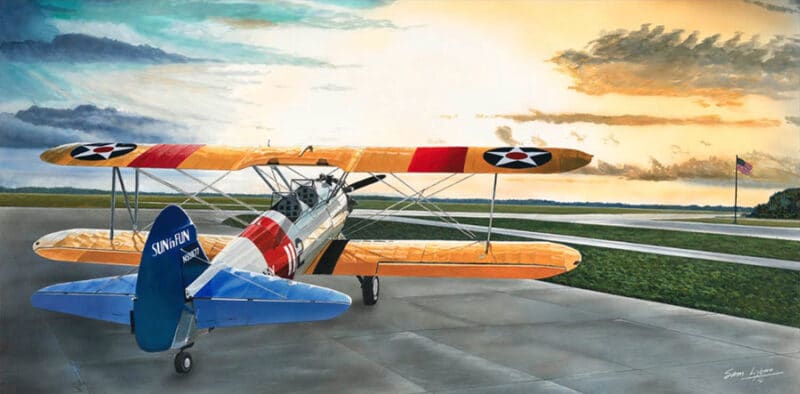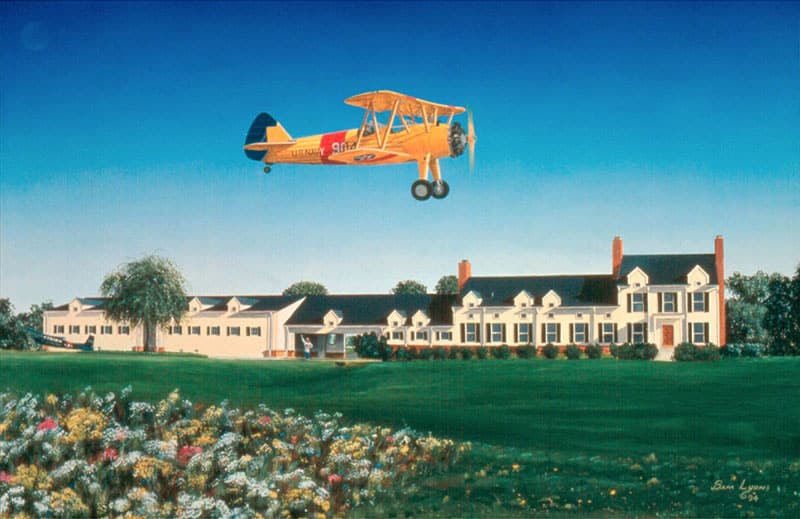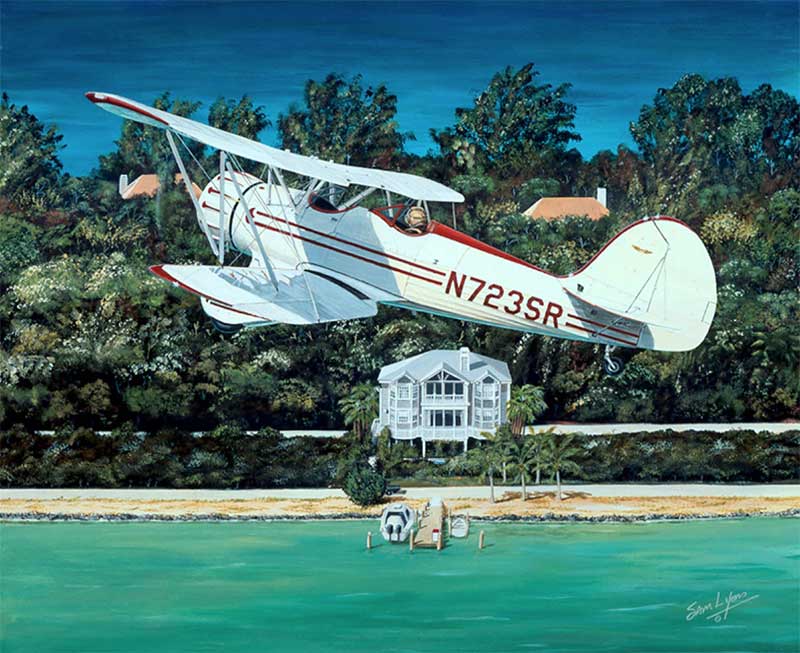Description
A WWI Sopwith Pup biplane is dramatically silhouetted against a golden sky. This print is a classic favorite.
Beginning of the War
The introduction of the Sopwith Pup into service in 1916 was an immediate game changer. Even today, over 100 years later, most historians consider the Pup to be one of the most important aircraft of WWI.
Tactics that the Pup was built around were copied by Britain’s allies and enemies alike during the war. The original WWI fighters were converted scout aircraft, but they were slow. Faster aircraft was needed that would be harder to hit. Then it was realized that weapons could be added to these scout aircraft, and potentially there was another way to attack the enemy. This birthed ground attack aircraft, and later, fighters.
One of these aircraft manufacturers was the Sopwith Aviation Company, located in Kingston Upon Thames. Sopwith began work right away, using an unbuilt design for a racing aircraft as the base. Sopwith would build the aircraft and have it tested by their chief test pilot, Harry Hawker. Hawker would then use his previous experience as a mechanic and engineer to suggest alterations to the design. As with most aircraft of the era, the Pup was made out of wood and fabric, rather than metal.
First Sopwith Pups
The Royal Naval Air Service (RNAS) would receive their first Pups in March 1916, before sending them to France in October that same year. They were deployed to the Somme, remembered for being one of the bloodiest battles in history. The Sopwith Pup’s main objective was to destroy German machine guns that were cutting down the Entente infantry in large numbers. By the end of the Somme campaign, the British Admiralty claimed that the Pup had destroyed over 20 German machine guns.
The first Royal Flying Corps Sopwith Pups appeared in December 1916, and were tasked with fighter roles. Here, it would face off against the Albatros D.II, Fokker D.II, and Halberstadt D.II. British Pups soon proved to be quite formidable, shooting down record numbers of German fighters. German pilots feared the Pup, as it was faster and more maneuverable than their own aircraft, as well as having more ammo.
During some battles, Royal Flying Corps Pups would fly alongside RNAS Pups in ground attack roles.
More Sopwith Pup Skills Discovered
As one of the Royal Flying Corps’ best fighters, as well as one of the smallest (and therefore lightest!), the Pup was perfect for the narrow runways and confines of the earliest aircraft carriers.
On August 2 1917, surprising the entire world, Squadron Commander Edwin Dunning became the first person to land an aircraft on a moving ship. And what aircraft did he use? A Sopwith Pup!
For much of 1917, the British would use the Pup to test the Furious Aircraft Carrier runway. The Americans took notice and soon started using their own Pups for tests on their own aircraft carriers, mostly in what is now Cuba.
Improved German Aircraft
Meanwhile, the Germans had been working on aircraft of their own that outclassed the Pup in almost every regard. By late 1917, these aircraft had been introduced. Naturally, they did just as they were designed to, obliterating a number of Pups before the year’s end.
As a result, the British, alongside Sopwith, were forced to design newer fighters that could outclass Germany’s newest fighters. In late 1917, the British introduced the Sopwith Camel and Sopwith Dolphin, which quickly replaced the Sopwith Pup on the front lines. As for the Pup, it was shipped back to the UK, and placed in storage.
Sopwith Pup Pulled Back Into the War
Used for pilot training, the Pup was put to use as an intermediate trainer. Once student pilots had graduated from the Avro 504 basic trainer, they’d train on the Sopwith Pup. Following this, they’d be put in a Sopwith Camel or a Sopwith Dolphin and be sent to France. From there, they would drop their bombs and return home.
Under air attack from the German G.V, British Generals noted that the G.V was lightly armed and armored. This gave the Royal Flying Corps the idea to get the rest of their Sopwith Pups back in the sky, and solve their bombing problem.
From late 1917 until the end of the war, the majority of the Pups would fly to try and shoot down G.V bombers. In essence, this made the Pup the world’s first interceptor aircraft, in everything but name.
After the War
When the war ended on November 11 1918, hostilities ceased. The newly formed RAF (formed in April 1918) chose to sell a large number of its Pups to private buyers. Most of these private buyers were former Pup pilots during WWI. These Pups would be used as barnstorming aircraft (essentially, airshow aircraft, before there actually were airshows). This would continue into the 1930’s and even the 1940’s, with the establishment of the first airshows.
Sopwith Pup: In Conclusion
Almost every pilot in the Central Powers had heard of the Sopwith Pup. Almost every pilot in the Central Powers knew what the Pup looked like, and where the major “hotspots” of Pups were.
It was so bad, that even the famed German fighter ace Manfred von Richthofen was scared of the Pup!
Thanks mostly to the Pup’s impeccable service life, the Pup left a rather incredible legacy on the aviation industry, some of which we can still see today. Almost 100 years later!
Pup Prints
The 16″ x 19.5″ prints are available in Limited Edition sizes of 500 Signed & Numbered and 50 Artist Proofs. Other Allied Fighters Sam Lyons has painted include: Stearman Sunrise and On Patrol.




Reviews
There are no reviews yet.